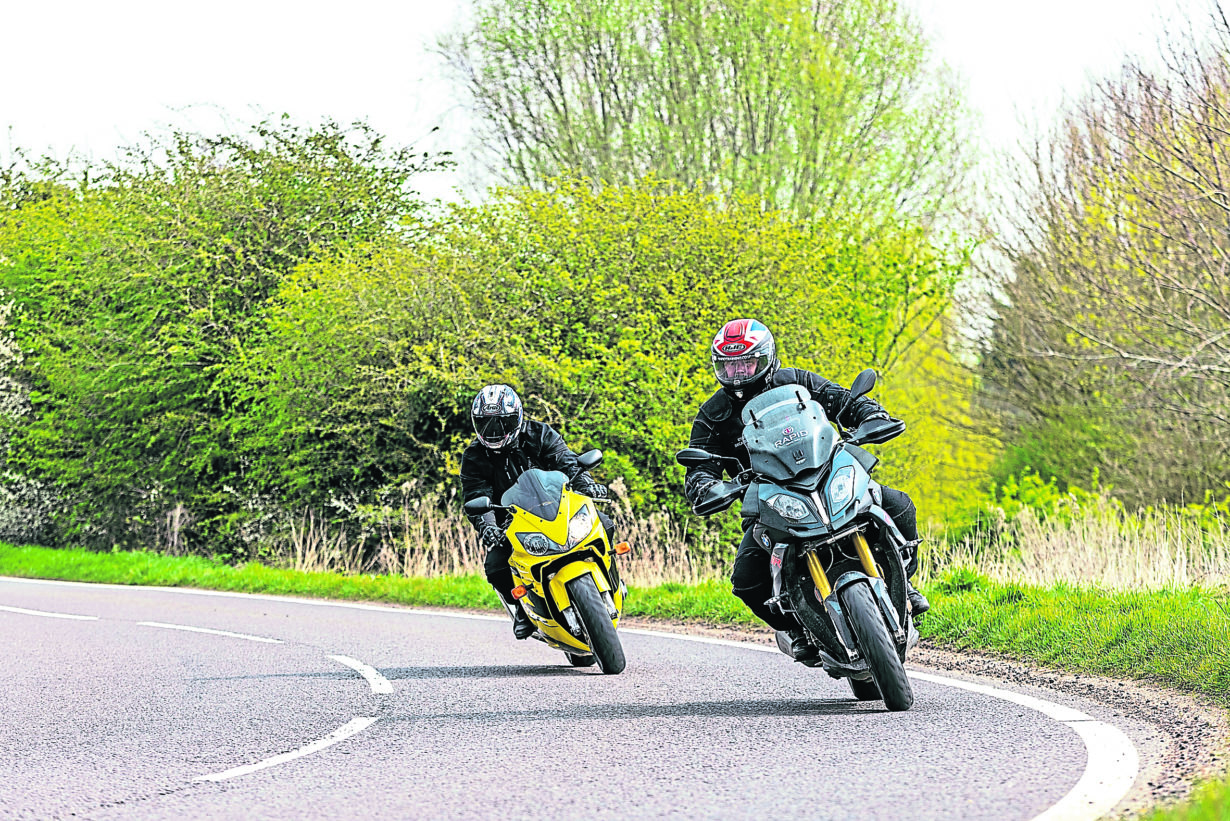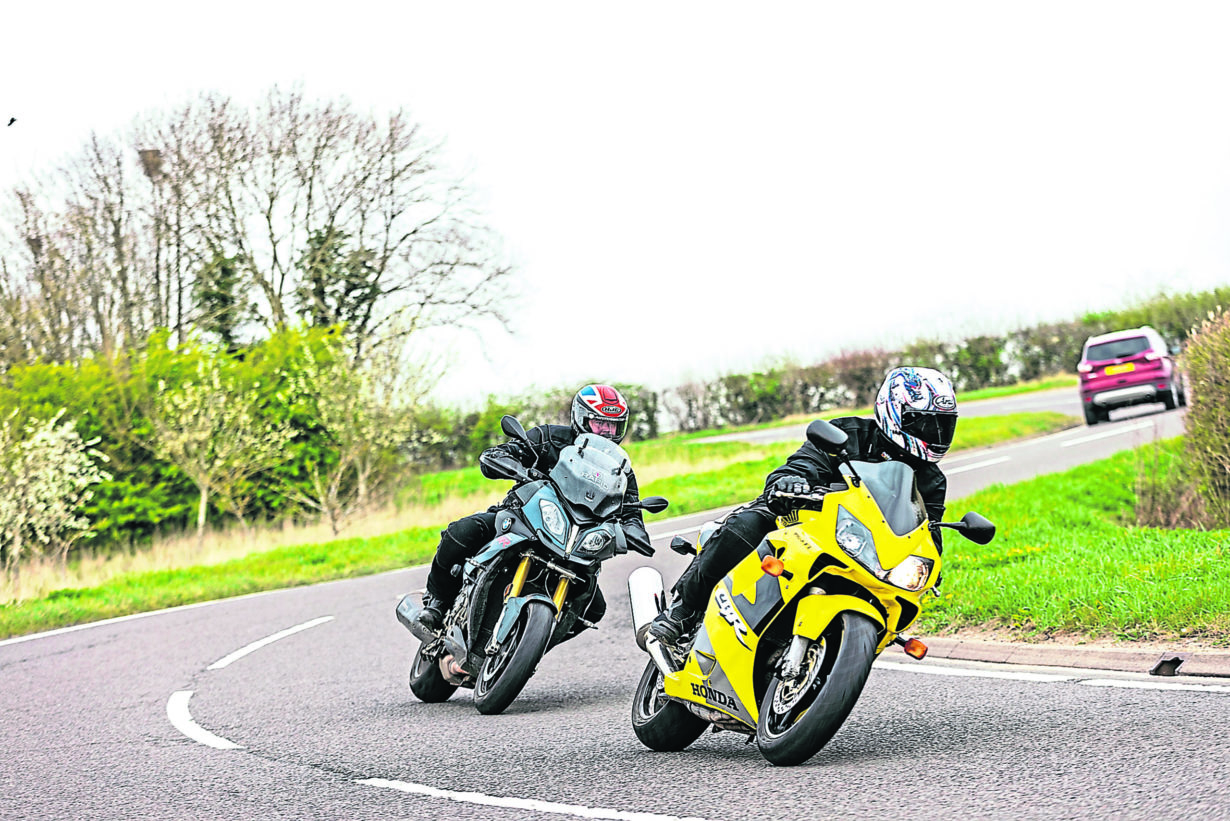WORDS: Mikko Nieminen (with Ryan Decarteret of RAPID TRAINING) PHOTOS: Gary Chapman
How to negotiate bends smoothly, confidently and efficiently

MB: How can we tell how severe a corner is?
Ryan: As always, reading the road is a defining skill. The rider’s ability to gather the right information, early, and in the right detail, will determine the speed it is safe for them to ride through a bend.
The rider should see the bend as soon as it is visible to the naked eye. This might be half-a-mile or more away. But registering that there is a bend early is the first step. Now it is on the rider’s ‘radar’, and as they get closer, they will start to pick up warning signs – chevrons, road markings, the presence of other hazards, and cross views. They will see which way the bend appears to be going, its severity, and if it is a single or double bend.
On initial turn-in, they will still be searching for road surface information, opposing traffic, and for tell-tale signs that the exit is opening up. Finally, they will identify where they want the bike to exit the bend based upon what is coming next.
MB: And where should we be positioned?
Ryan: At the most basic level, positioning for bends is about extending the view of the rider. This involves moving to the left on the approach to a right-hand bend, or moving to the right on the approach to a left-hand bend.
But, in the real world, there are many more variables to consider such as road surface, camber and condition, which may dictate a different line; other traffic behind and ahead, especially oncoming traffic on left-handers; the view across or through the bend, which could lend itself to an improved line; the speed of the rider, which may not necessitate an extended view; other hazards, such as actual or potential for pedestrians on country roads; and even at a modest 50mph, if an oncoming vehicle is also travelling at 50mph, the closing speed will be 100mph, leaving little – if any – time for either rider or driver to make corrections if they are on a collision course.
MB: So, how do we choose our speed?
Ryan: The technique used to enter a bend at the fastest speed possible differs from that required to cruise through the bend at a leisurely pace. We also need to consider that it is rarely the severity of the bend or the capability of the bike that limits the speed on the road, it is almost always the need to be able to stop on our own side of the road, in the distance we can see is clear.
There is no one speed for any one bend that is the correct speed to achieve this. Stopping distance will depend on reaction time, which will depend on the rider’s ability to read the road. Braking distance will depend on the machine control skills of the individual rider, the road surface condition, the machine characteristics, and lots of other factors.
As individual riders, we must develop an ability to read the road ahead and accurately assess safe entry speed relative to all of these variables. As we develop our observation, interpretation, planning and machine control skills, we will be capable of improving safe entry speed.
How do we assess entry speed? There are many ways we can assess the severity of a bend and the appropriate entry speed. Cross views can often allow us to see the direction of the road, sometimes several bends ahead. The speed and position of other vehicles entering or exiting the bend can also give valuable insight into the nature of the bend, as does the presence of warning signs and chevrons, etc. As a general rule, the more paintwork and furniture, the more severe the bend. Another tool which many riders find helpful in assessing the speed of entry is known as the Limit Point.
MB: What is the Limit Point?
Ryan: Also referred to as the ‘vanishing point’, the Limit Point is the furthest point a rider can see into a bend where the nearside kerb appears to meet the far kerb from the rider’s viewpoint. It gives important information about the severity of a bend. If we are approaching a bend and the Limit Point remains static as we are closing towards it, the bend is likely to be tight. The longer it stays static, or worse, appears to be moving towards you, the tighter the bend is likely to be. If the Limit Point is moving away from us as we approach from a distance, it is likely to be a fairly loose bend.
The technique to negotiate the bend using the Limit Point is this:
■ On the approach, for as long as the Limit Point remains static and we are moving towards it, we slow down.
■ Once the Limit Point begins to move away from us at the same speed we are approaching it, we are at the correct speed.
■ Once we are in the bend, and the Limit Point starts to move away from us faster than we are approaching it, the bend is opening, and we can begin to consider rolling on the throttle.
■ A word of warning about the Limit Point, however. Do not get fixated on it – it is only one tool and doing so will stop you searching for other information which you may need.
MB: And what about gear selection?
Ryan: Gear selection should clearly relate to engine speed. Too high a gear will result in a wallowy ride through the bend with limited ability to control speed. Too low a gear will prevent positive exit drive. The right gear will offer good control and great exit drive. And the circumstances will not only dictate our gear selection, but also throttle control as well.
MB: So, finally, what are we doing with the throttle whilst cornering?
Ryan: Cornering throttle control is an essential skill in expert cornering. There are three distinct phases in cornering that require differing throttle application: entry, mid corner and exit.
The ideal throttle position at corner entry depends on how challenging the corner is. In an easy, rolling bend, where the approach and exit speed are similar, it is often best to keep the throttle rolled on at the entry stage. This balances the demand for traction between both tyres; removes weight transfer out of the cornering equation; settles the suspension at its most efficient point of travel; and keeps ground clearance to its maximum. However, in a more challenging corner, where the bike is working harder (such as a tighter or off-camber bend), it can be better to enter the corner throttle off. This increases the weight on the front tyre (and therefore increases traction at turn-in) and improves the steering geometry of the bike, making it easier to steer accurately, quickly and more tightly into the corner.

Whichever throttle approach is taken at corner entry, the mid-corner section is almost always best handled on ‘positive throttle’. This requires the rider to open the throttle sufficiently to maintain speed (cornering forces remove speed, so the roll-on has to be sufficient to counter this).
Positive throttle offers more stability as it transfers the weight, and therefore the traction demand through both tyres improves the suspension capability and increases the ground clearance of the bike through the bend. The goal of the rider is to get back to this state as soon as the bike is settled after turn-in (note though, getting back too early or too aggressively pushes the bike wide and risks loss of traction).
As soon as the rider can see the corner exit opening up, they can begin a steady throttle roll-on, and at the point they can see far enough down the road, they can optimise performance by timing roll-on with standing the bike up. As the bike reduces lean angle, more traction is available for throttle and this allows more progressive exit speeds.
However, especially on slippery roads, it is important that the rider doesn’t ‘get greedy’ with the throttle. Getting back on the gas too early, with too much lean angle, will seriously threaten traction. The key is in the timing.
Rapid Training
Founded in 1997 by a group of ex-racers and current police riders, Rapid set out to deliver a fresh approach to rider development with its own, relaxed, no-nonsense approach to coaching. No formality, no student bibs, just passionate riders being coached by the most highly qualified professionals in the business – and having fun. The company claims to offer the most comprehensive and advanced rider coaching available in the UK. www.rapidtraining.co.uk

The Expert: Ryan Decarteret
Ryan is a passionate motorcyclist, Rapid National Operations Manager and Coach with a background in surveillance and covert police riding, with around one million miles of riding experience (and he says he’s still learning).
#rapidtraining #howto #morebikesyoulike #motorcycles #readersrides #motorcycle #ukbikers #bikelife #bikers #motorcyclists #morebikes #morenews #motorcyclenews #motorcyclegear


